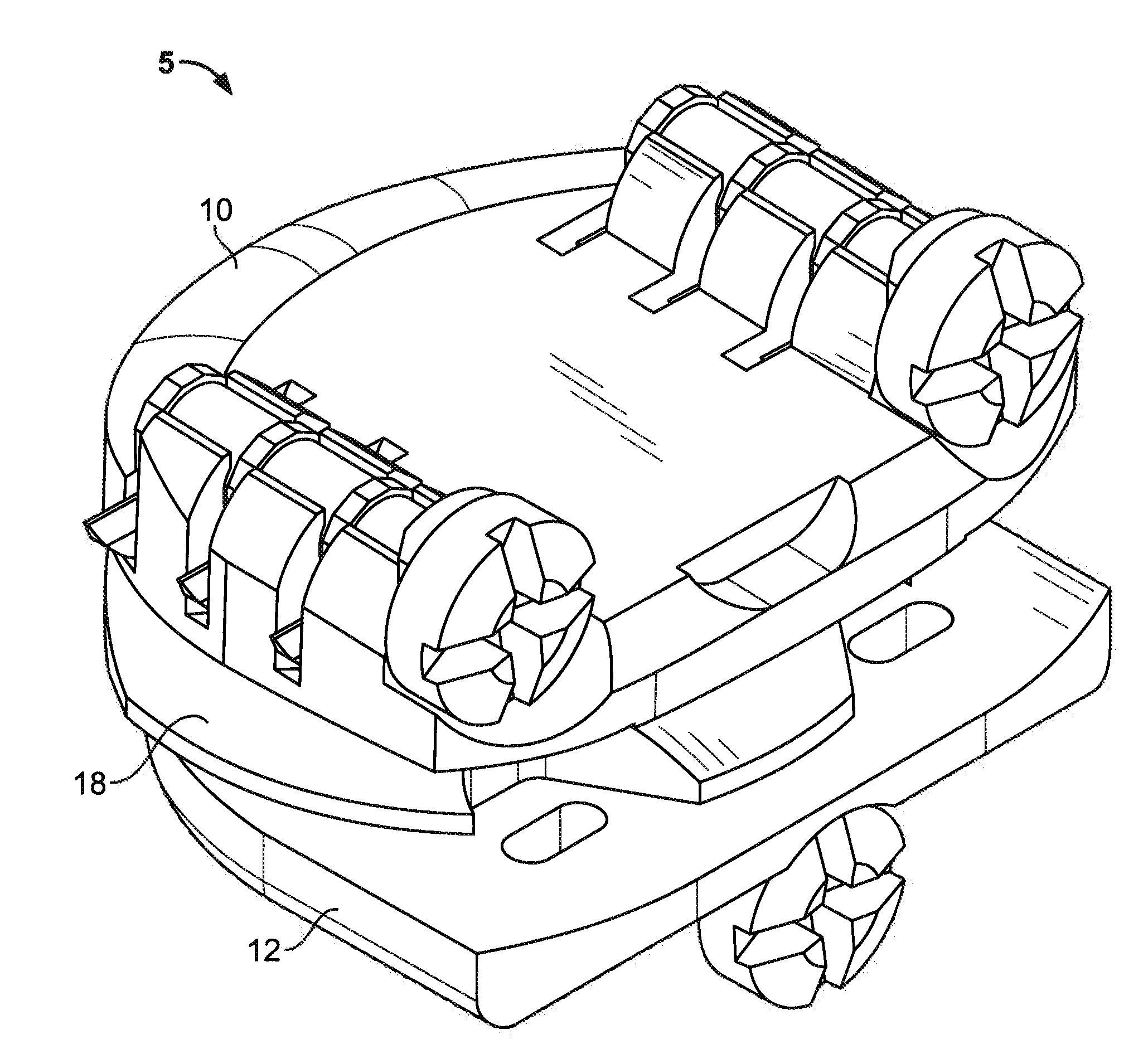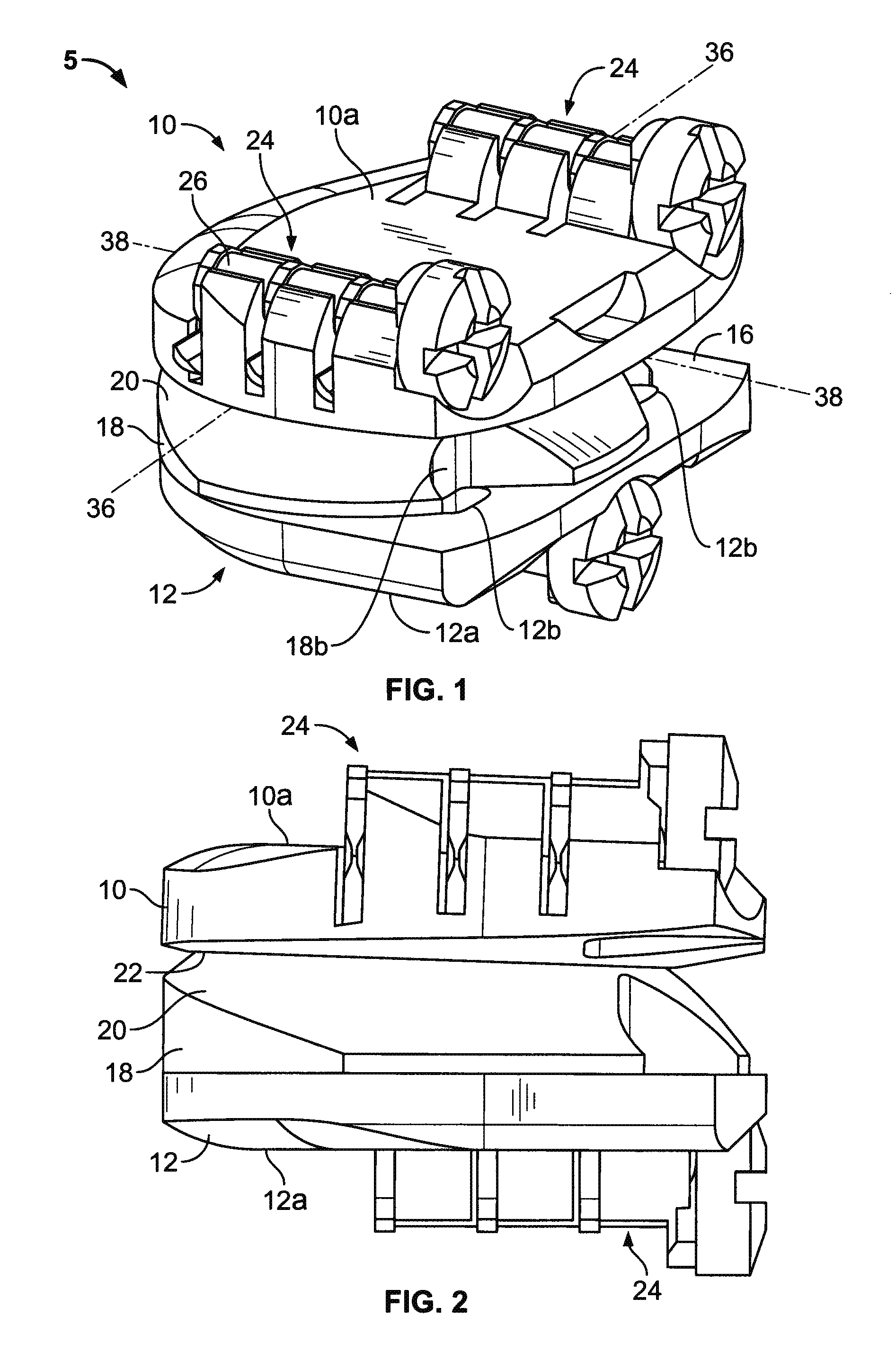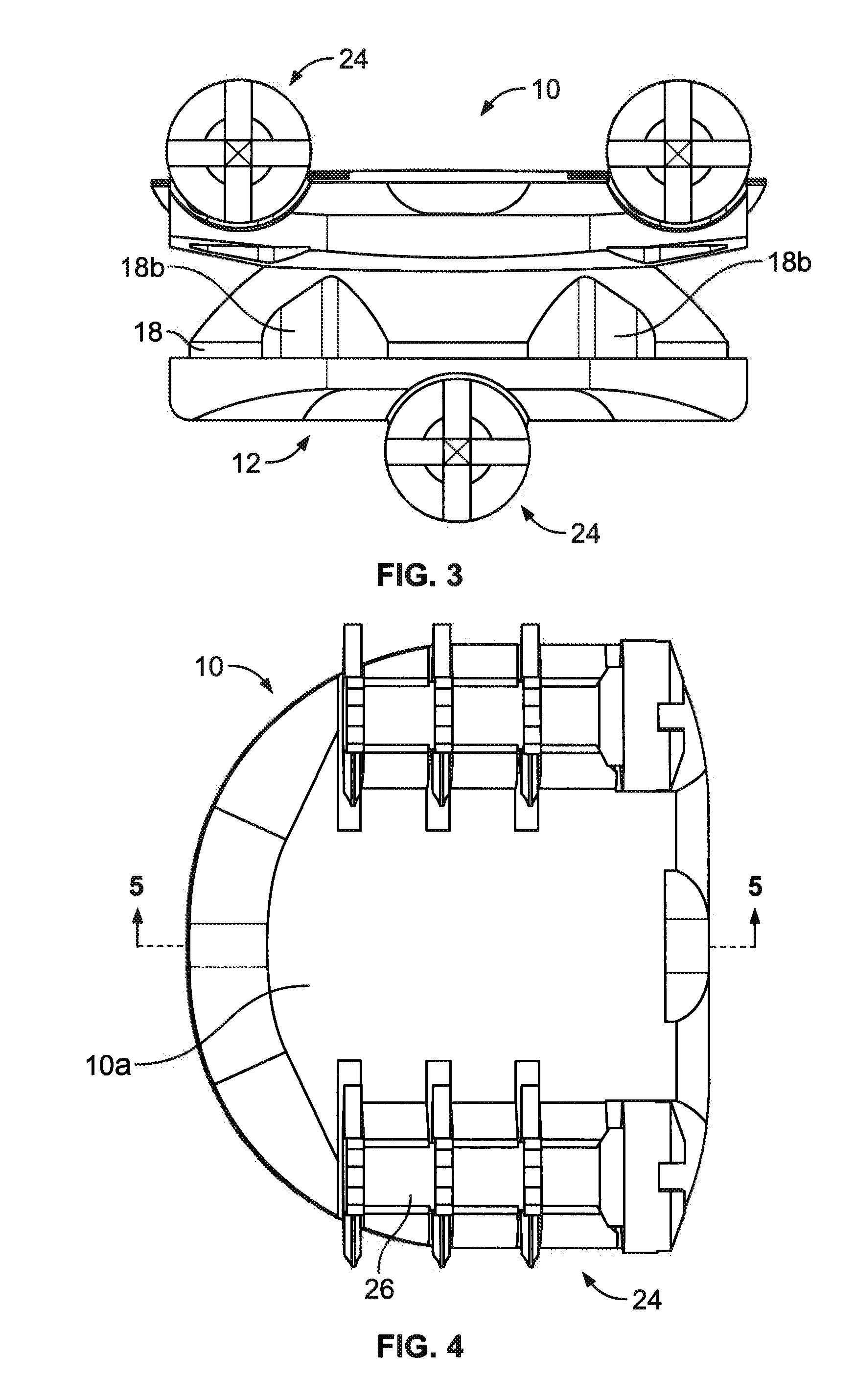Motion Preserving Artificial Intervertebral Disc Device
a technology of intervertebral discs and implants, which is applied in the field of motion preservation artificial implants, can solve the problems of further complications, pain, and patient discomfort, and achieve the effects of preventing the patient from slipping, promoting self-centering, and keeping the facet joints
- Summary
- Abstract
- Description
- Claims
- Application Information
AI Technical Summary
Benefits of technology
Problems solved by technology
Method used
Image
Examples
Embodiment Construction
[0046]In a preferred embodiment, such as illustrated in FIGS. 1-16, an artificial disc device 5 comprises an upper implant body 10 and lower implant body 12. The upper body 10 comprises a substantially concave recess portion 14, as shown in FIG. 8, and the lower body 12 comprises a substantially flat interior portion 16, which extends generally in a transverse plane with respect to the patient as shown in FIG. 1, which may be defined by lateral axis 36 and anterior-posterior axis 38. A moveable member, such as a translatable member 18 is preferably provided between the upper and lower implant bodies 10, 12 to allow lateral movement between the bodies. Preferably, the translatable member may translate along the anterior-posterior axis 38, with the anterior side being illustrated on the right side of the page of FIG. 1 as it is implanted in the patient. The translatable member 18 may have a convex portion 20 disposed between the upper and lower implant bodies 10, 12 for providing an a...
PUM
| Property | Measurement | Unit |
|---|---|---|
| length | aaaaa | aaaaa |
| radii of curvature | aaaaa | aaaaa |
| radius of curvature | aaaaa | aaaaa |
Abstract
Description
Claims
Application Information
 Login to View More
Login to View More - R&D
- Intellectual Property
- Life Sciences
- Materials
- Tech Scout
- Unparalleled Data Quality
- Higher Quality Content
- 60% Fewer Hallucinations
Browse by: Latest US Patents, China's latest patents, Technical Efficacy Thesaurus, Application Domain, Technology Topic, Popular Technical Reports.
© 2025 PatSnap. All rights reserved.Legal|Privacy policy|Modern Slavery Act Transparency Statement|Sitemap|About US| Contact US: help@patsnap.com



